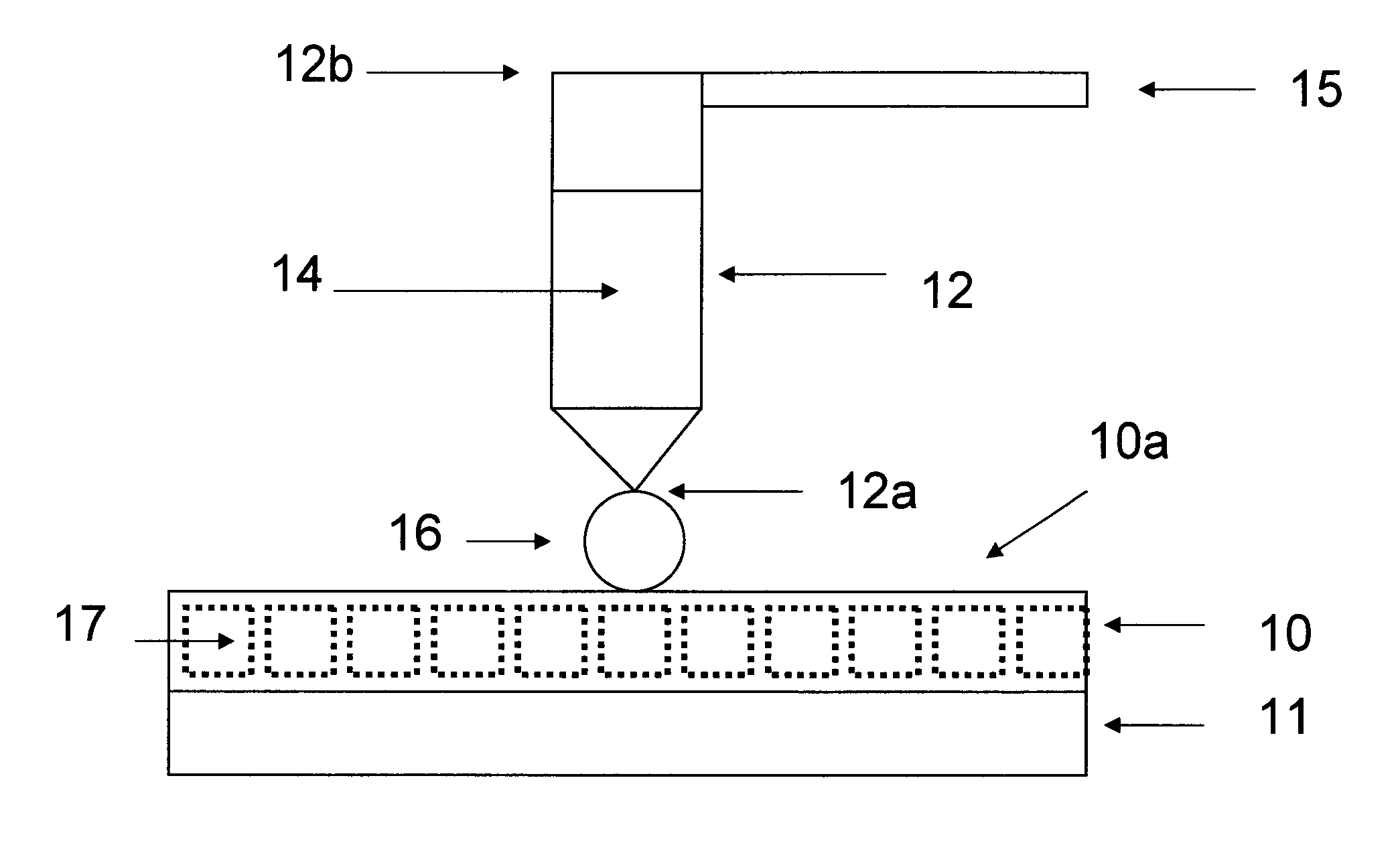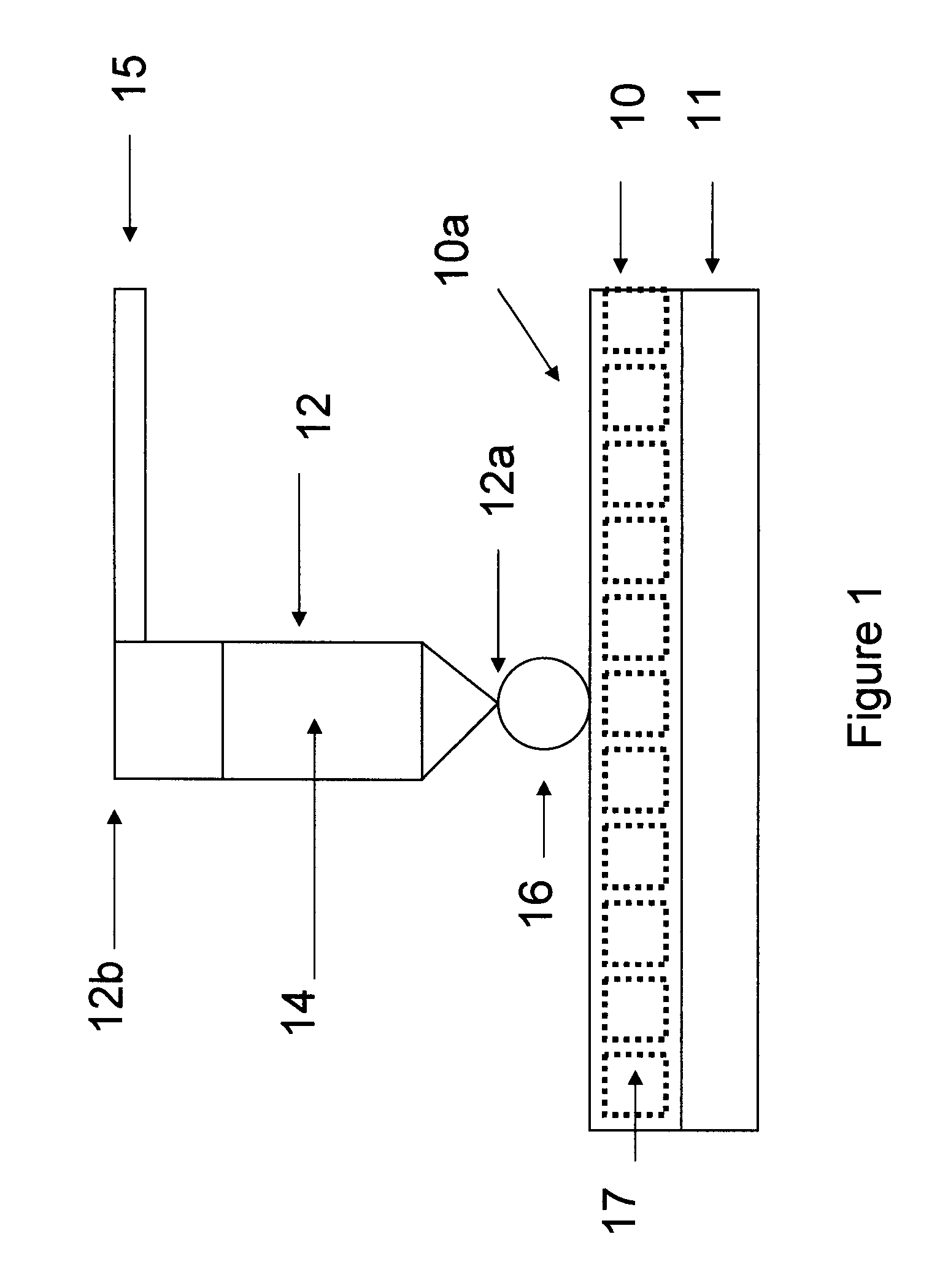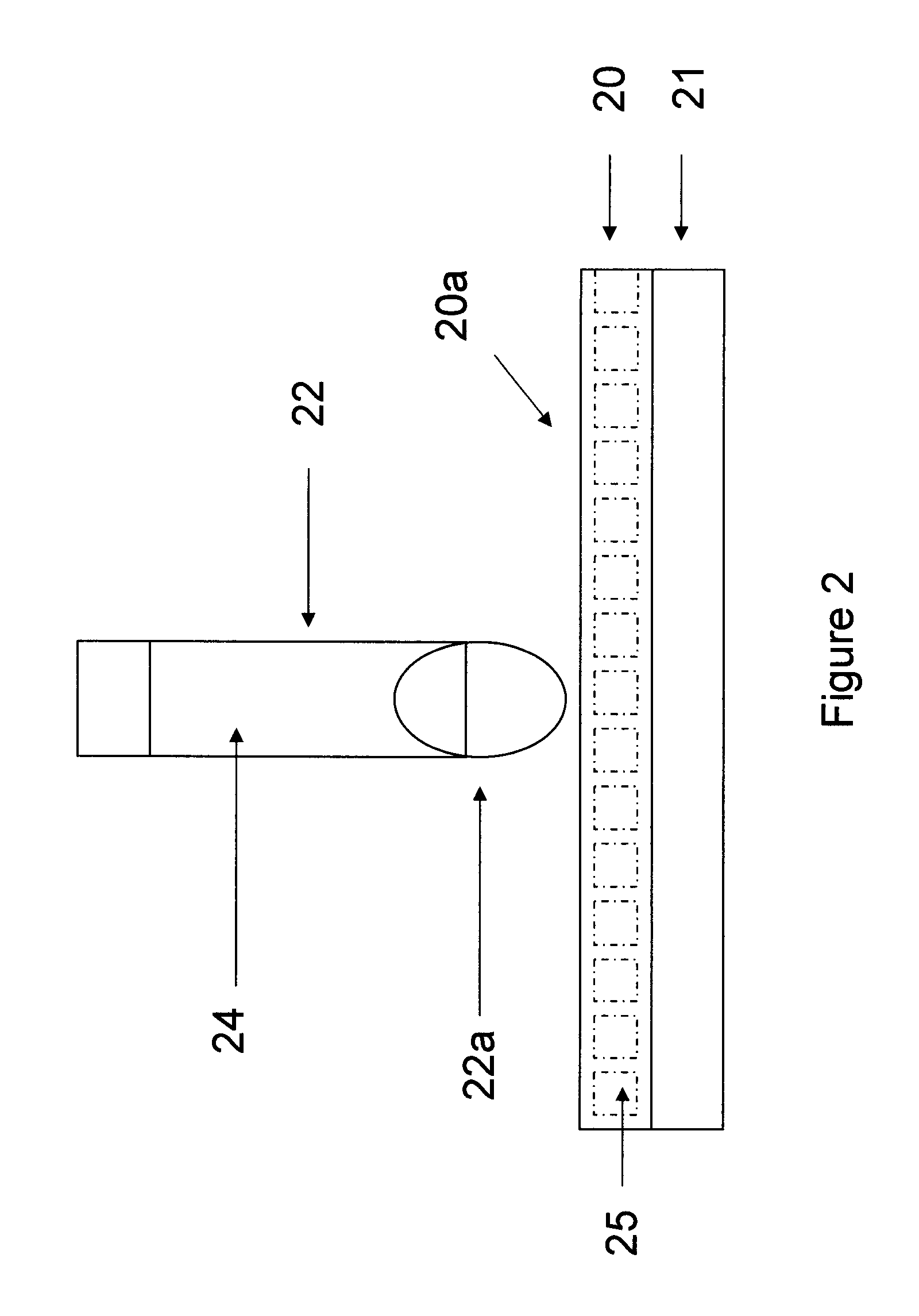Electrophoretic display and methods of addressing such display
a technology of electrophoretic displays and backplanes, applied in the field of electrophoretic displays and methods of addressing such displays, can solve the problems of mechanism failure, low cost, high resolution backplanes that cannot be driven commercially, etc., and achieve the effect of significant speed enhancemen
- Summary
- Abstract
- Description
- Claims
- Application Information
AI Technical Summary
Benefits of technology
Problems solved by technology
Method used
Image
Examples
Embodiment Construction
[0023]FIG. 1 illustrates an electrophoretic display of the present invention which comprises a stationary electrode layer (11), an electrophoretic display panel (10) comprising display cells (17), a movable element (12) having a conductive tip and a non-conductive liquid (14) filled in the body of the movable element. One side of the display panel has a dielectric surface (10a). The liquid released from the movable element in the form of droplets causes contact between the electrophoretic display panel (10) and the conductive tip of the movable element (12) which in turn forms a temporary yet an integrated electrical field between the stationary electrode layer (11) and the conductive tip of the movable element (12). The movable element comprises two parts 12a and 12b. The part, 12a, as stated, is conductive and is connected to a voltage source (not shown). The other part, 12b, may be linked to a robotic arm (15) which controls the movement of the movable element
[0024]FIG. 2 illustr...
PUM
 Login to View More
Login to View More Abstract
Description
Claims
Application Information
 Login to View More
Login to View More - R&D
- Intellectual Property
- Life Sciences
- Materials
- Tech Scout
- Unparalleled Data Quality
- Higher Quality Content
- 60% Fewer Hallucinations
Browse by: Latest US Patents, China's latest patents, Technical Efficacy Thesaurus, Application Domain, Technology Topic, Popular Technical Reports.
© 2025 PatSnap. All rights reserved.Legal|Privacy policy|Modern Slavery Act Transparency Statement|Sitemap|About US| Contact US: help@patsnap.com



